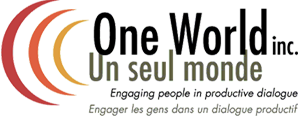The Best Way to Problem Solve: Utilize Everyone

One of the biggest untapped assets in most organizations is the skills and experience of their own people. When it comes to problem solving, vertical dialogue is an invaluable asset. Frontline workers are often founts of knowledge, but all too often their input isn’t sought by management, even though they may have a superior grasp of critical parts of an issue.
Organizations can benefit greatly by creating a culture of learning — one that includes everyone from frontline workers to upper-level management. It starts with the idea that learning is about more than just going to training sessions. A learning culture exists when all workers are encouraged to be critical, ask questions and constantly look for different approaches and better ways to do things.
Management must “set the tone”. Being critical and asking questions is what learning is all about and shouldn’t be seen as a challenge to authority. On the contrary, it should be recognized and rewarded!
Learning culture benefits the bottom line
Evidence suggests organizations with significant learning cultures have an easier time recruiting and retaining qualified staff. I worked on a review of innovative practices in recruitment and retention in home care organizations for VON Canada (a Canadian non-profit home and community care organization). The results were clear – staff were strongly attracted to organizations with strong learning cultures, and they highly valued those working environments.
The VON Canada study also highlights that it would be a mistake to think innovation comes only from the upper-rungs of management or PhD-toting academics in ivory towers. In one example, a group of front-line nurses in one hone care organization felt strongly that they could develop a better approach to wound care. Wound care is a task that accounts for a very high proportion of home care resources, so any approach that could lead to more efficient home care could produce significant savings and better health outcomes for the patients. The nurses wanted to try using some dressings which, while more expensive, could lead to much faster healing.
In this case, management listened to the nurses and helped them to set up a research project to test their ideas. The research backed up the nurses’ ideas and the whole department changed their approach to wound care as a result. The nurses have gone on to present their new approach in conferences across Canada. This was truly a win-win-win scenario – the patients got better care, the organization got a better, more cost-effective intervention, and the nurses were recognized and supported for their innovative idea.
Cultivating a learning culture isn’t so much about shifting resources as attitudes. When staff feel their knowledge and experience are valued by the organization and they are encouraged to learn, that can pay off in staff loyalty, as well as in innovation.
